THE MAGIC OF FILM STOCKS
There’s something magical in the good old film stocks. We, people, do really enjoy the aesthetics, don’t we? Film photography is not dead as one famous hashtag claims and it is true for sure. In fact, we’ve been witnessing a slow but steady revival of the technique, materials and cameras even. The resurgence is on, as we speak. There are new film stocks introduced every now and then, like the ORWO NC500 color film for instance, some of discontinued emulsions are being brought back to life by their manufacturers, Kodak did this with their uber-popular Gold 200, or CineStill successfully kickstarted the great CineStill 400D. Leica is bringing the legendary M6 rangefinder back into production and the digital photography giant Nikon is launching a film-lookalike of one of their digital mirrorless cameras. Isn’t the digital photography good enough, why the revival? The answer is very simple; it’s the popular demand for film photography of course. The unique looks, the textures, hues, shadow play and even the way one takes shots is something you can never get close to when it comes to the digital counterpart. Clearly the only way to imitate the film look, or film stocks is the post production. We should rather say, that was the case until now. It’s AI age, it feels like we are looking at the world we know from the inside of the Shanghai Maglev train, just passing by and surprise, surprise the film stocks are there. Not only you don’t have to have a camera to take an incredible picture, but you can make it look like it’s been taken on film. You just mention the emulsion in your prompt and then the magic happens.
First, to know what sort of look each and every film gives, or at least the top ones, you can check out the great guide by Moment here. Well-written and easy to grasp. Once you get the idea, you can easily continue with the amazing thread by Marco, the AI Digital Explorer (@ai_artworkgen), and author of PRMPT magazine.
“So, I use film stocks in my prompts regularly. I can see the impact they have on my images. here is a breakdown of some of my favourite ones.”
Ilford Delta HP5 Plus 400 (high-speed black & white film with fine grain and medium contrast. It’s a great option for sports, action, travel, journalism, documentary, and indoor available light photography*)
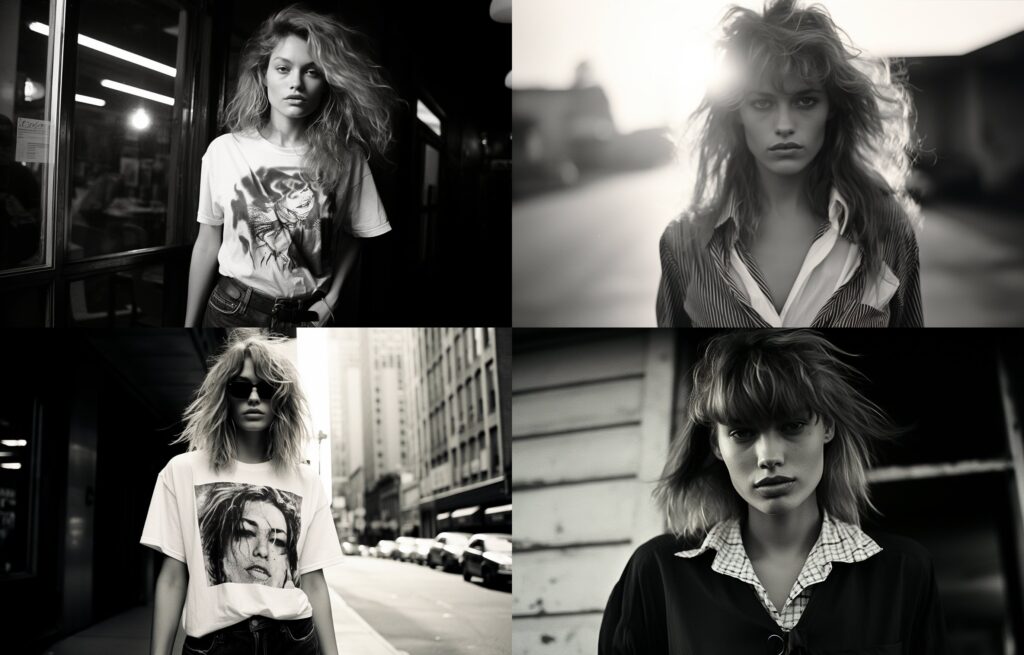
prompt: 1980s, supermodel wearing a tie-dye tshirt :: shot on Ilford Delta IP5 Plus 400 –seed [kept the same throughout] –ar 14:9 –v 5.2 –style raw / source: X
Kodak Portra 800 (Portra 800 is very similar to Portra 400 but with more noticeable grain and slightly more contrast. It has warm tones, very good exposure latitude, and while its grain is more noticeable it’s still very pleasant looking. Its higher iso makes it ideal for lower light shooting*)
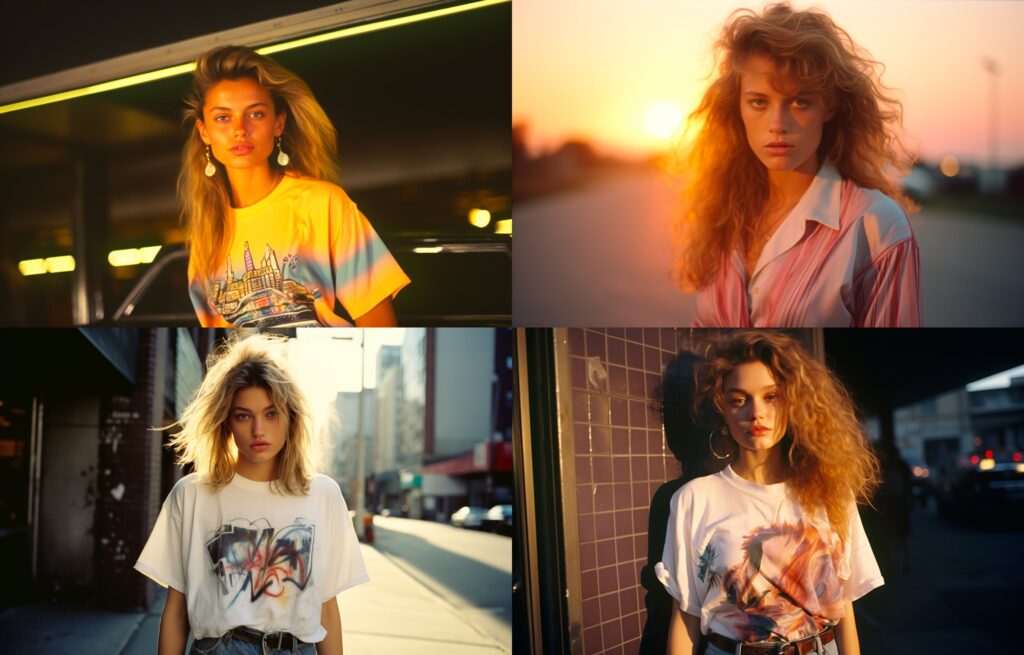
prompt: 1980s, supermodel wearing a tie-dye tshirt :: shot on Kodak Portra 800 –seed [kept the same throughout] –ar 14:9 –v 5.2 –style raw / source: X
Fujifilm Pro 400H (known for its cooler look with beautiful magenta and green tones. It’s great for portraiture and one of the most commonly used films to photograph weddings. It has mild contrast, fine grain, and very low satiation *)
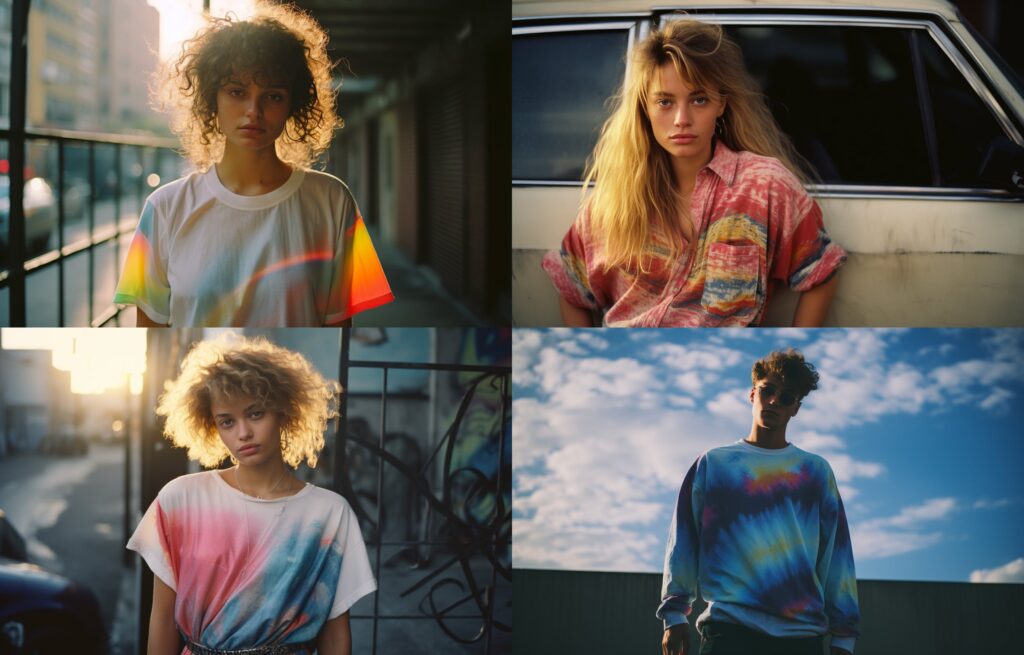
prompt: 1980s, supermodel wearing a tie-dye tshirt :: shot on Fujifilm Pro 400H –seed [kept the same throughout] –ar 14:9 –v 5.2 –style raw / source: X
Redscale Film / Lomography Redscale (adds a beautiful burnt orange/red warmth to images)
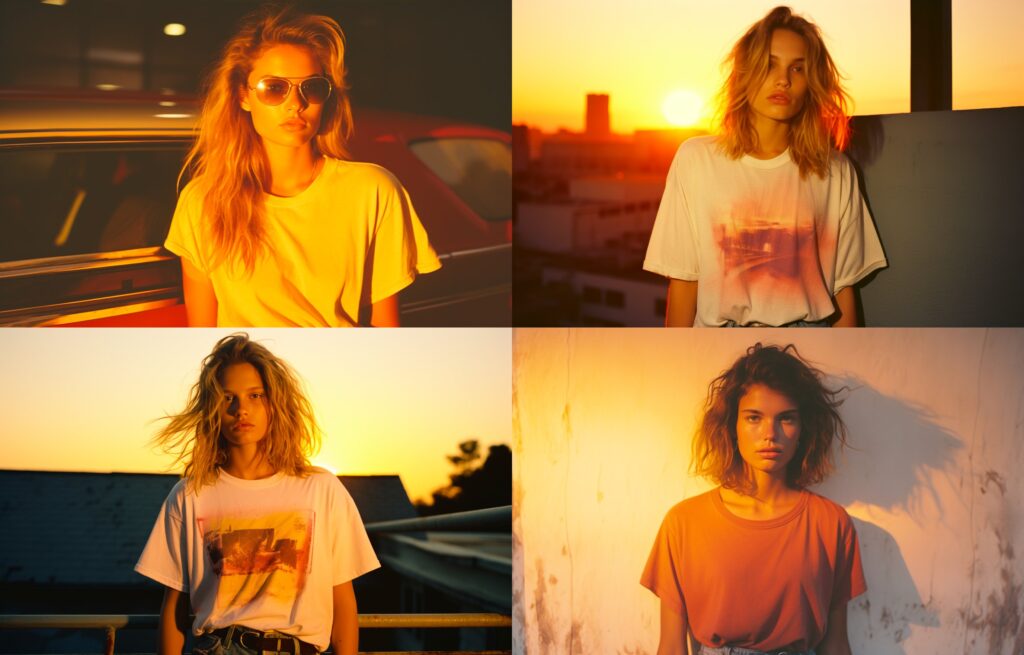
prompt: 1980s, supermodel wearing a tie-dye tshirt :: shot on Lomography Redscale –seed [kept the same throughout] –ar 14:9 –v 5.2 –style raw / source: X
Infrared Film (creates wildly strange and artsy photographs. It’s not surprising that this psychedelic aesthetic was popular in the 1960s and IR photos appeared on Jimi Hendrix, Donovan, and Frank Zappa’s album covers *)
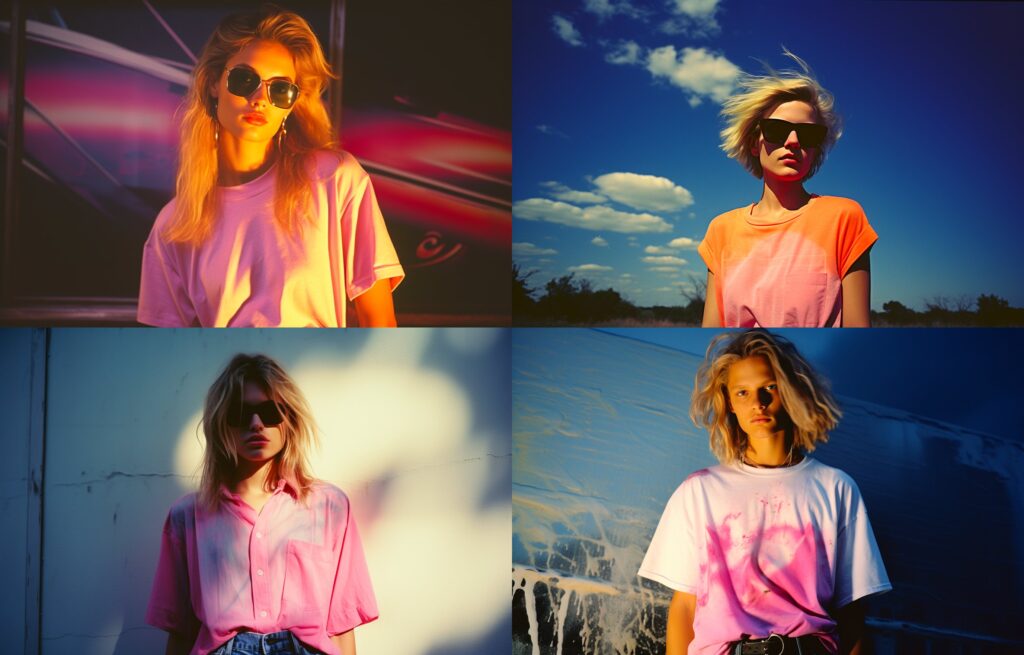
prompt: 1980s, supermodel wearing a tie-dye tshirt :: shot on Lomography Redscale –seed [kept the same throughout] –ar 14:9 –v 5.2 –style raw / source: X
Kodak Aerochrome (False Infrared – the most expensive film money can buy*)

prompt: 1980s, supermodel wearing a tie-dye tshirt :: shot on Kodak Aerochrome –seed [kept the same throughout] –ar 14:9 –v 5.2 –style raw / source: X
CineStill 400D (a fine grain daylight balanced color negative film that delivers a soft color palette with natural saturation and rich, warm skin tones *)
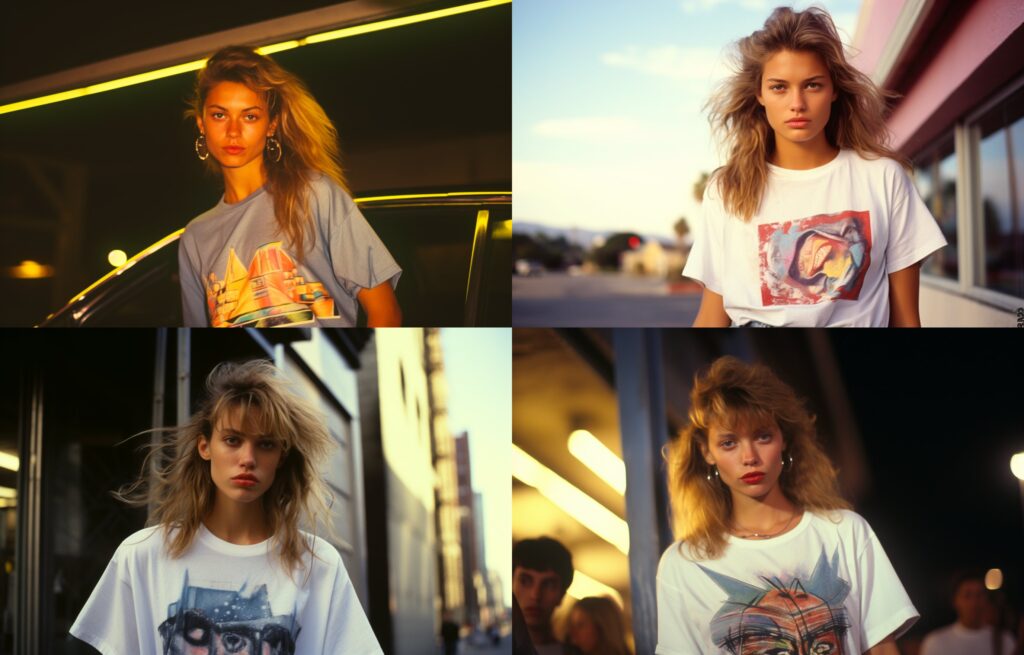
prompt: 1980s, supermodel wearing a tie-dye tshirt :: shot on CineStill 400D –seed [kept the same throughout] –ar 14:9 –v 5.2 –style raw / source: X
If you are interested in reading more about some of the great film stocks you can read a lot about it here, on the Darkroom. Also, make sure to check out Marco’s PRMPT magazine, a great source of creativity and inspiration. Marco, you just got yourself a regular reader. Looking forward to the next issue.